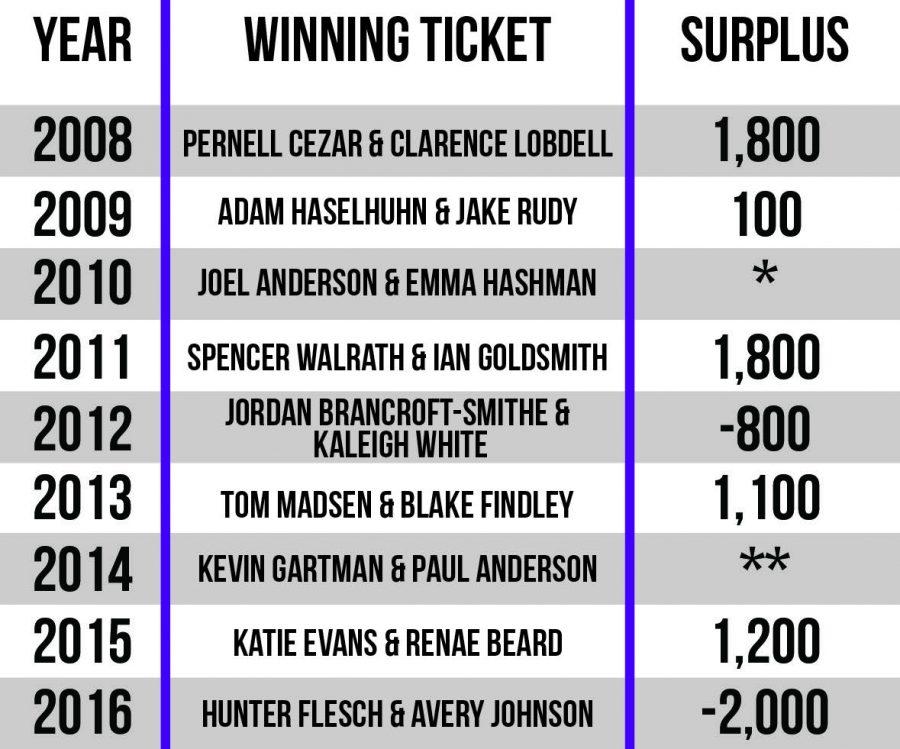NISG campaigns by the numbers
The table above breaks down the number of Facebook friends held by winning tickets. These data are rounded to hundreds. A single asterisk indicates running unopposed; double asterisks indicate no data available.
Feb 16, 2017
Since the NISG Elections Blog began in 2011, campaigns have been tracked by some easily observable numbers: friends, likes and visibility on the campaign trail. In 2011, the first author of the elections blog, Trevor Boeckmann, wrote, “Many of you may have noticed something in our candidate write-ups…Facebook friend counts. You must be thinking we can’t possibly be serious. It’s Facebook! Friends aren’t some popularity contest. This is dumb.”, and shortly thereafter elaborating: “In every race since the explosion of Facebook, the bigger Facebook group has won.”
With stakes like that, it’s worth looking at the years since (see table for the complete breakdown).
The pattern held only one more year, until Bancroft-Smithe and White won despite a large deficit of 800 friends, and Flesch-Johnson in 2016 when their campaign swept the election with a large margin, despite a deficit of over 2,000 friends.
There’s the data, rounded to hundreds of “surplus friends,” the difference in the number of friends of the winning ticket to their opponent, and in years with runoff elections only looking at the remaining two tickets.
With two campaigns winning despite large deficits in 2012 and in 2016, the conventional wisdom may not hold. Still, for each election year, winning campaigns averaged 500 more friends than their opponents, surely giving that ticket a competitive edge in reaching voters.
In looking at the campaigns this year, I’m including Twitter, as though the platform has been around for many years, this year’s tickets are using the platform far more than in previous races.
Future election journalists will hopefully find the data useful, but I can’t say for sure how well either ticket is doing. Here’s what the race looks like by the numbers as of Feb. 14, one week before voting.
(Maggie) Miller & (Danielle) Massey
Total Facebook friends: 1,962
Facebook page likes: 308
Total Twitter followers: 744
Campaign Twitter followers: 111
Jamal (White) & Tristan (Bernhard)
Total Facebook friends: 3,485
Facebook page likes: 664
Total Twitter followers: 1,423
Campaign Twitter followers: 298
By these stats, the conventional wisdom is that Jamal-Tristan have taken an early and prominent lead.
Using Facebook’s “Insights” feature, I was able to obtain user engagement statistics for their Facebook Pages. That data for the past week told a different story: Miller & Massey has made 36 posts with 327 reactions, comments and shares, to Jamal-Tristan’s 9 and 73, respectively.
The Miller & Massey campaign will be betting on their more engaged base having a greater impact than page likes, and Jamal-Tristan will be hoping their larger reach and higher likes count will pull through for them.
Both campaigns can find something to be optimistic about from this data, but at the end of voting on Feb. 22, only one narrative will be right.
Will Miller & Massey buck the trend and win with a more focused and engaged friend group, or will Jamal-Tristan show that popularity going into the race matters more and prove the rule?








